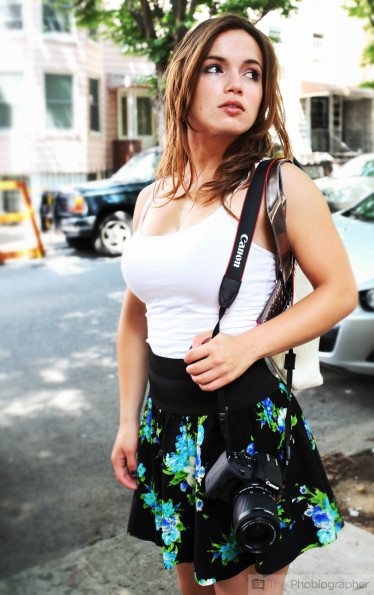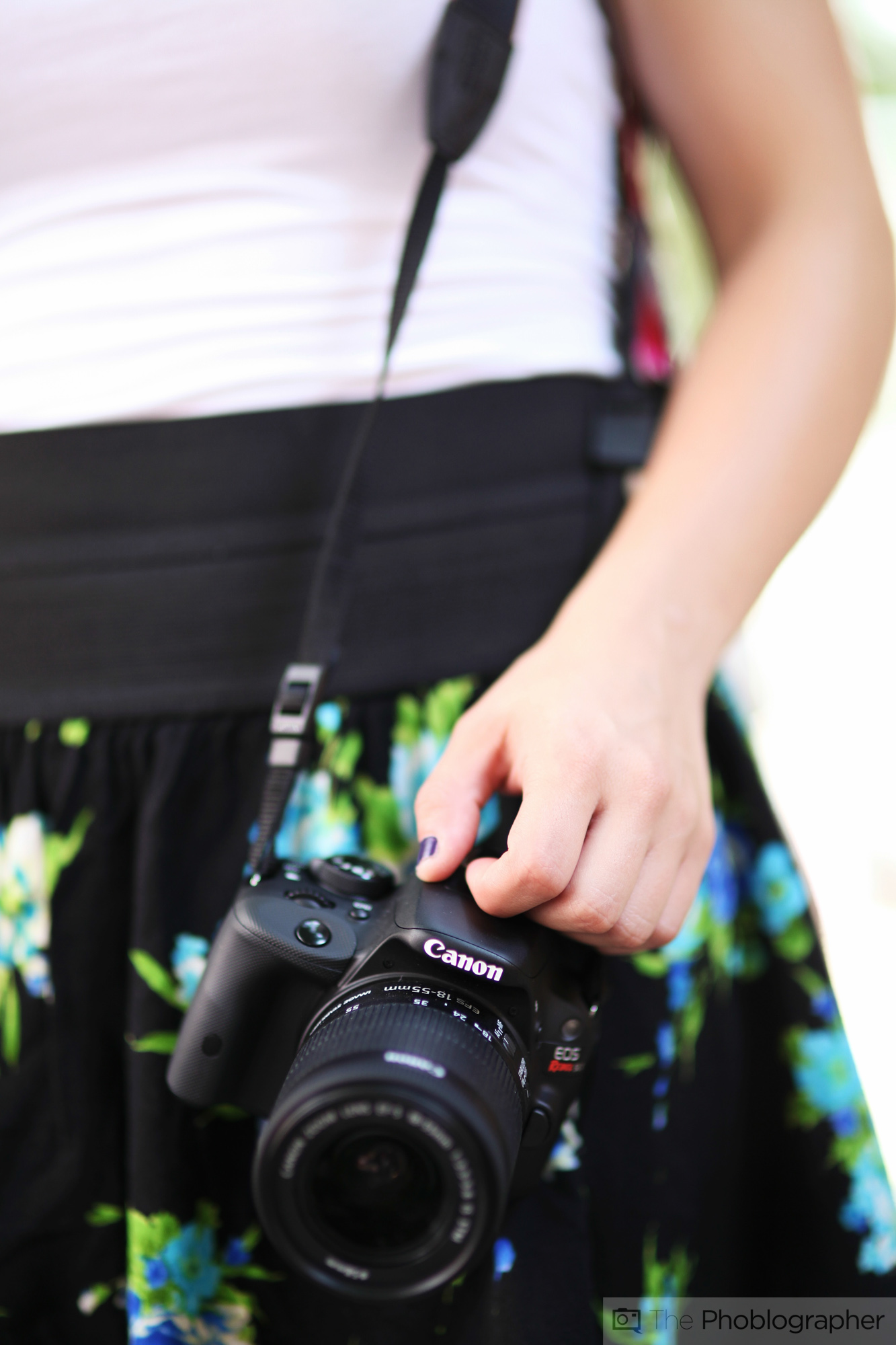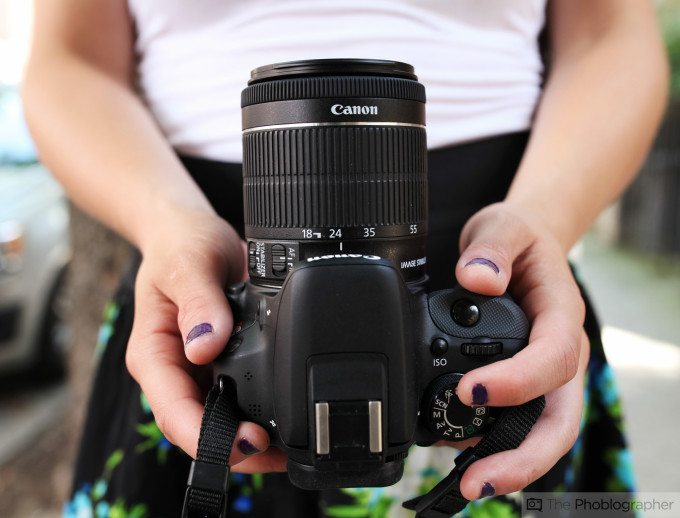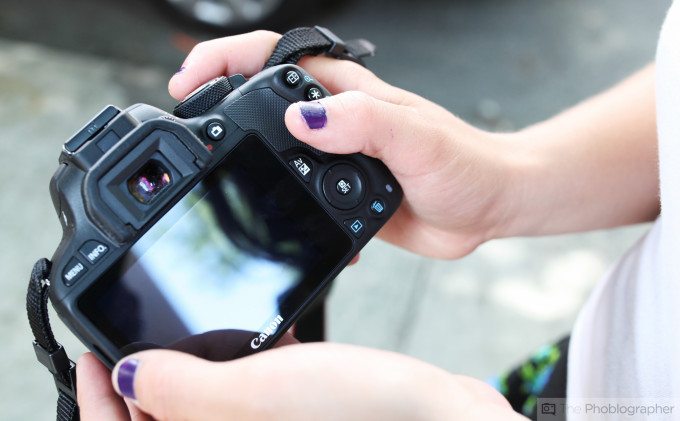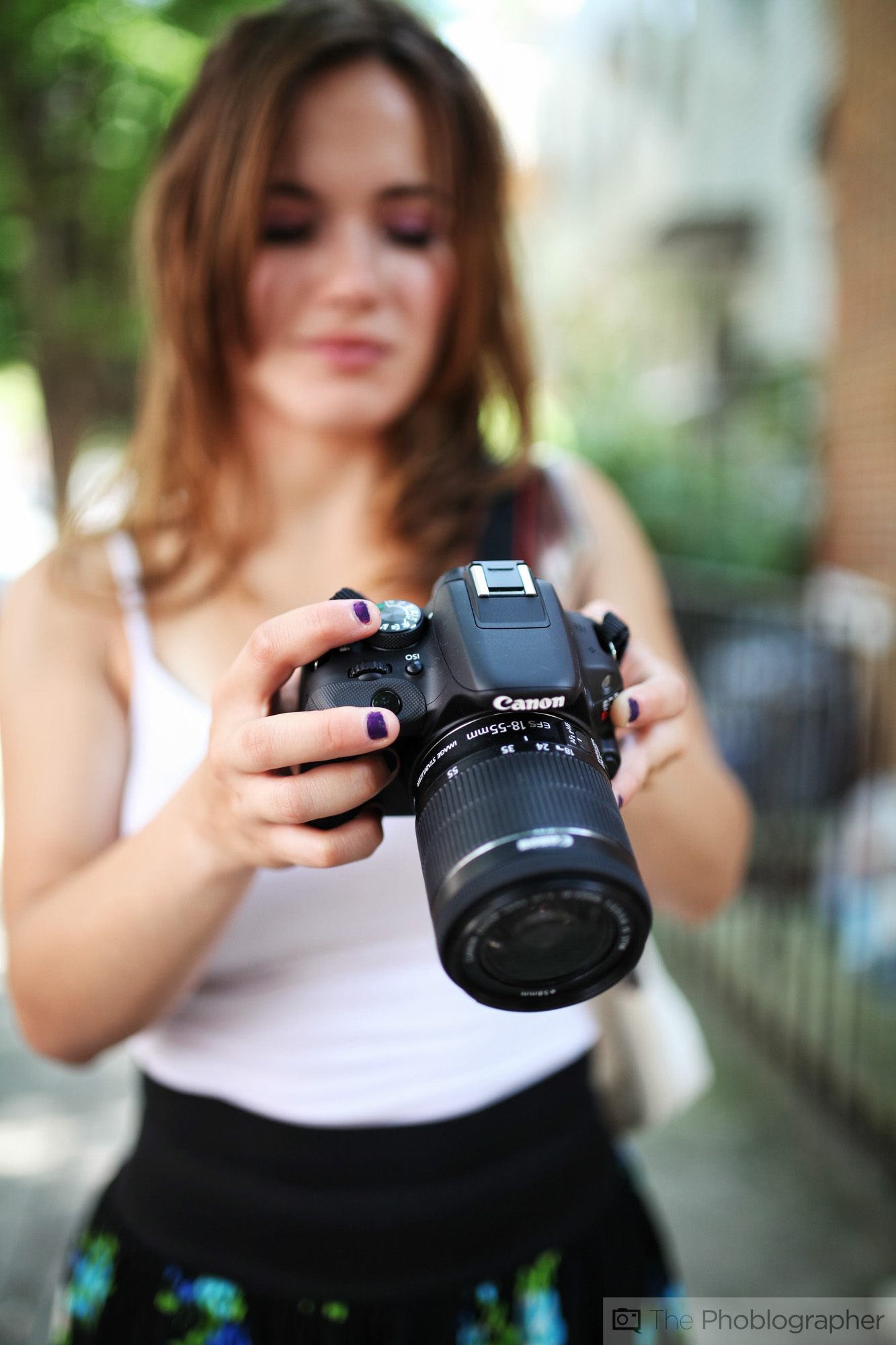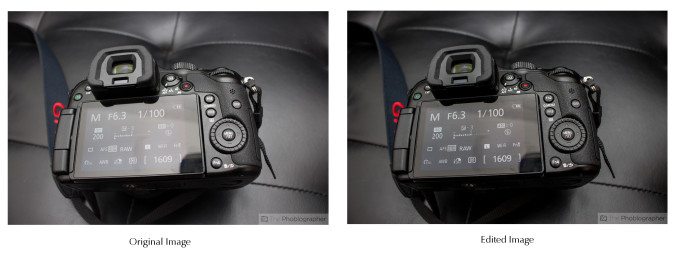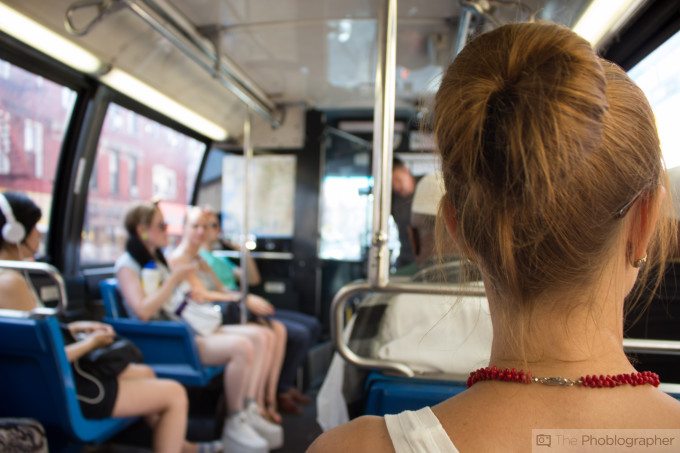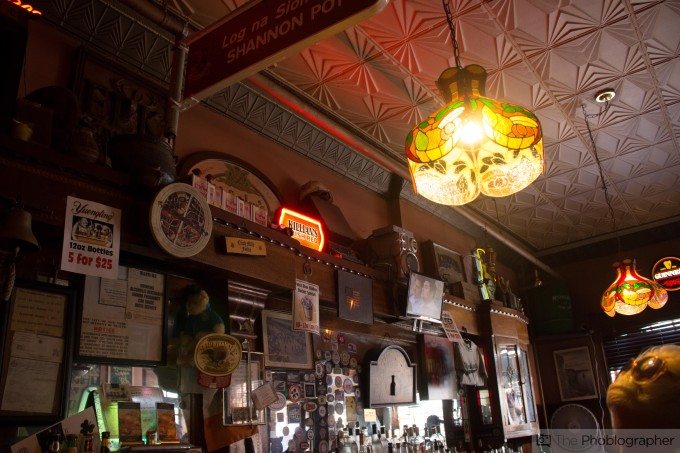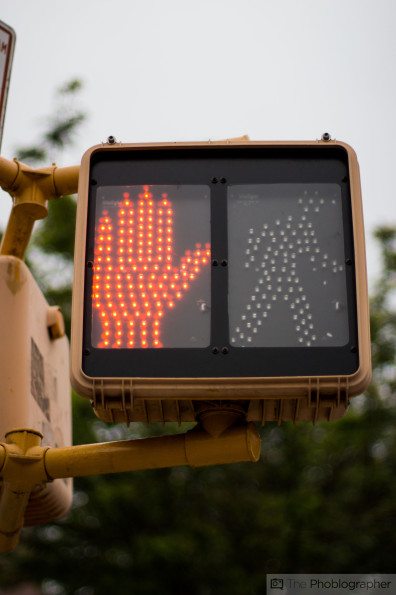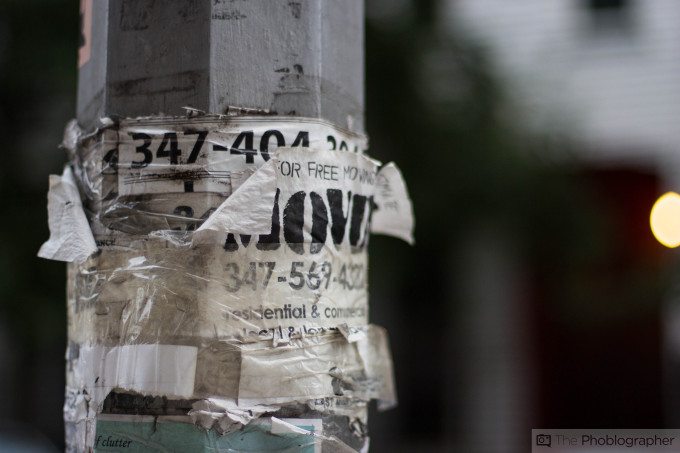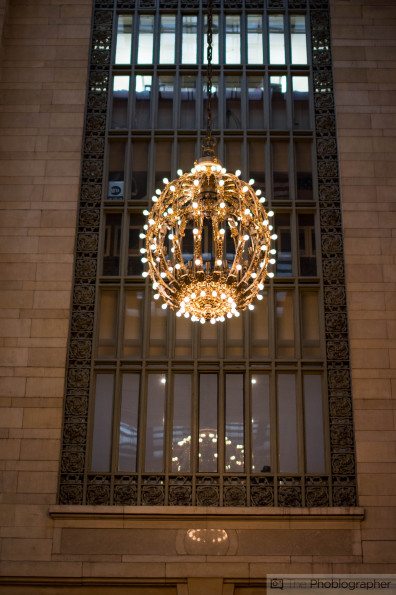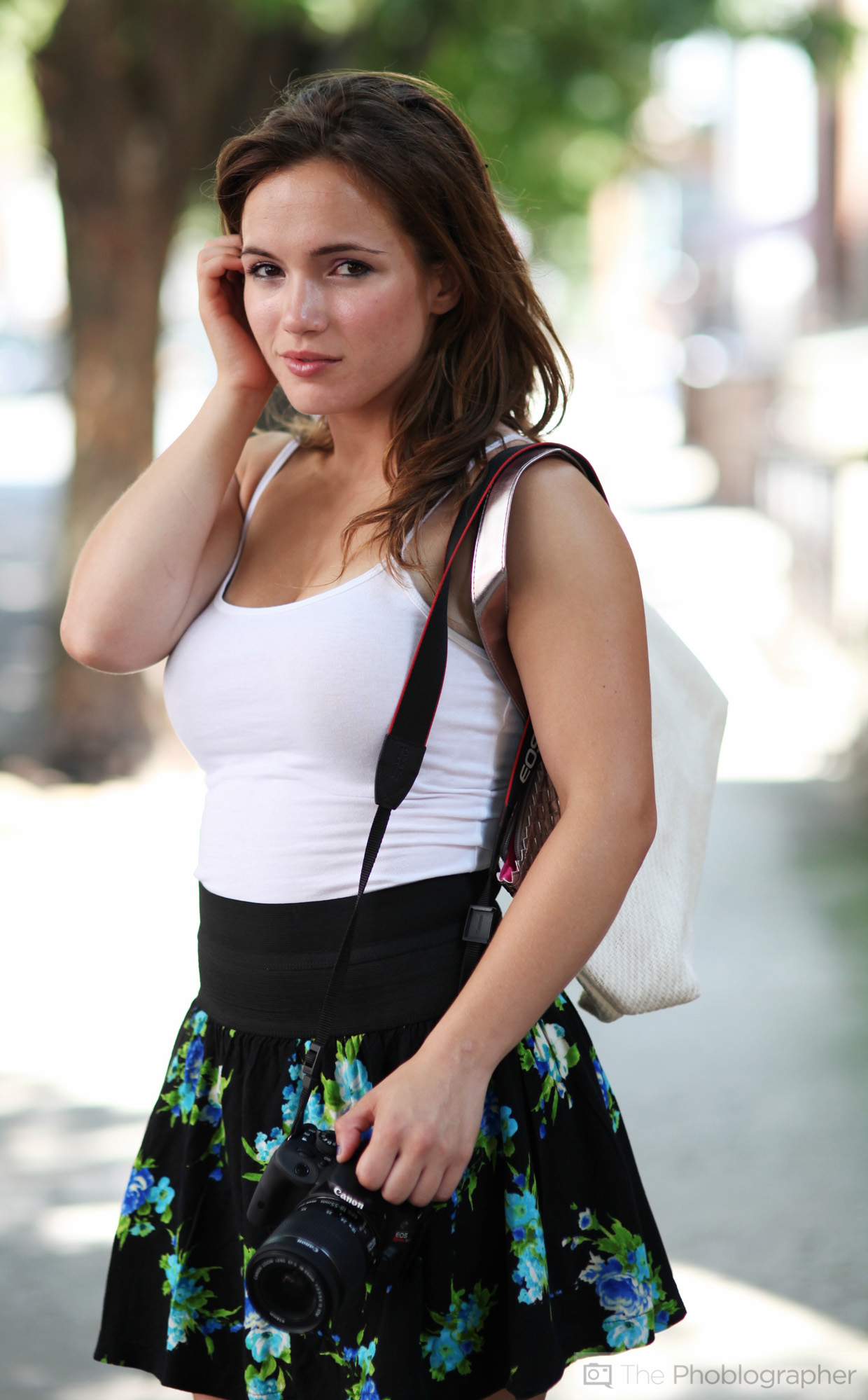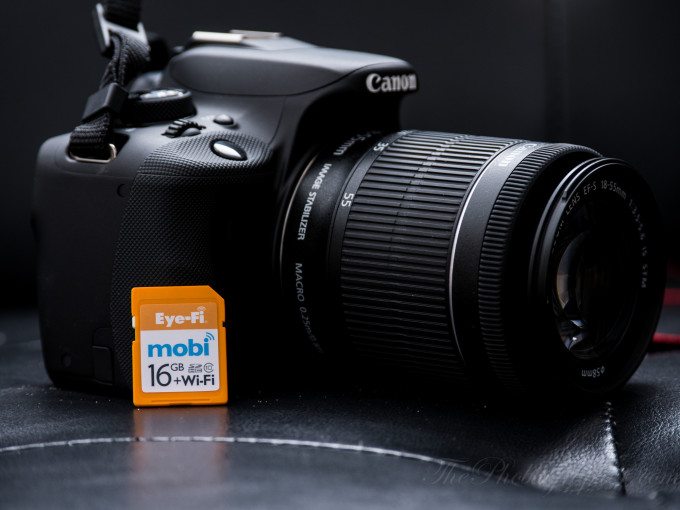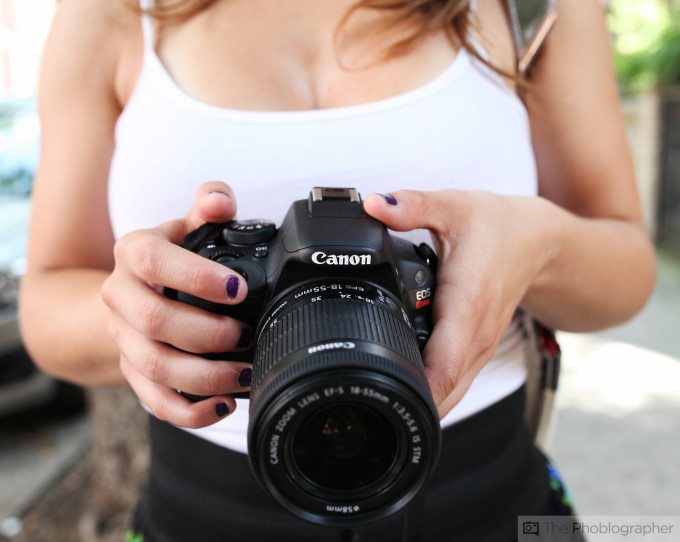
When we first got our hands on the new Canon Rebel SL1, we were quite shocked by how small it is. This is one of the smallest DSLRs that we’ve had the pleasure of holding. The SL in the naming convention stands for Super Light. And in that naming convention, Canon stated in our initial meetings with them that it is targeted towards women–and a high emphasis is also placed on shooting in Auto.
In my time walking around NYC, I’ve seen loads and loads of DSLR users shooting in Auto. Many have said that they haven’t had time to sit down and read the manual yet and other said that they springed for the camera just so that they could get better pictures.
With all that in mind, the Canon SL1 sports a 18MP APS-C sized imaging sensor that is significantly larger than the one that you find in most point and shoot cameras–and therefore effectively gives you better image quality. It can shoot 4 frames per second in continuous shooting mode to help capture your dog or child running across the yard. The camera can also shoot 1080p HD video, has a touch screen, and can become very sensitive to light via its ISO abilities that range from 100-12,800.
And for the first time ever, we shot with this camera in the automatic modes in addition to our manual testing.
Pros and Cons
Pros
– This camera gives the novice photographer a heck of a lot of power
– Bright LCD screen
– Touchscreen capabilities are awesome
– Super small and super light
– Simple to use
Cons
– A bit too small for my hands
– I put this camera in the hands of many, many female photographers and even they found it to be too small
– No wireless flash control for the user looking to step up their photography game even further.
Gear Used
We used the Canon Rebel SL1 with the 18-55mm STM lens, Sigma 50mm f1.4, Canon 50mm f1.4, and the Eye-Fi Mobi card. We did additional testing with the Phottix Odin triggers and the Canon 580 EX II being diffused by the Westcott Rapid Box Mini Octa.
Tech Specs
Specs taken from our First Impressions post
– Brand new 18MP APS-C sensor
– ISO 100-12,800 (6400 ISO native)
– 4 fps
– 1080p HD video
– 9 Focusing points one cross type
– Hybrid CMOS AF II, which is one of the major upgrades to the new sensor
– 80% of the sensor has focusing abilities
– Touch screen LCD (3 inches) with multi-touch operation
– Multi-point and single-point AF
– Uses the same battery as the EOS M
– 95% viewfinder
– 1/200th flash sync
– .87% magnification in the viewfinder
– 14.36 oz
– 4.6” (w) x 3.57” (h) x 2.74” (d)
Ergonomics
The Canon Rebel SL1 is a camera that is small, super light, and well built for someone with small hands at the price point. There isn’t a whole lot in terms of controls to it and it is overall quite a straightforward camera. Part of this is characterized by the front–which is quite plain Jane.
The Rebel SL1 has a top area that can honestly be described as something that adheres closely to the philosophy behind the Rebel line of cameras. The top of nearly devoid of controls minus a mode dial, pop-up flash control, hot shoe, shutter release, ISO button, and an exposure dial.
And then there’s the back! The back of the Rebel SL1 is mostly dominated by the new touchscreen. On the top left are the menu and info buttons while the viewfinder separates it from the Live View/Movie record button. This one button may confuse many users as it has two functions and if you’re not familiar with the lingo, you might be lost.
Then there are the focus selection point buttons, aperture control, playback, trash and more.
Build Quality
Considering the price point of this camera, the build quality is fairly decent. It is mostly comprised of plastic. However, I think that Canon and other DSLR manufacturers seem to neglect who their users are with cameras like these. Many new DSLR users really in fact don’t know a thing about how to properly maintain and protect their camera. In my years of working at a retailer, I have encountered:
– A young college woman who had her camera in her purse and threw her purse around 10 feet to simply go chase after ducks. The kit lens broke that day.
– Another college woman who accidentally poured beer over her camera
– A male journalist at CES who took the lens off of his Rebel and proceeded to put the Rebel in his jacket pocket and the lens in his other pocket–without the body or lens caps.
– A person who brought their DSLR to the pool with them and after getting out of the pool, decided to grab her camera and take pictures of her other family members using the LCD screen. Unfortunately, she didn’t dry herself off and so water got into the camera and malfunctioned.
– A man who brought a DSLR to a wedding on a beach and decided that it would be an awesome time to switch lenses from his 18-55 to a 55-200. In the process, he found smears on his sensor. He proceeded to take the lens off and while the camera was on and not downward facing, he blew air into the camera the same way that we would do with the old Nintendo game cartridges.
– A man who brought his camera to an event and stated that his lens was cracked because his viewfinder/diopter wasn’t properly calibrated to his eyesight. To that end, he demanded a new lens.
With all of this in mind, we think that there needs to either be better education on maintaining your first DSLR or better ways to teach people how to use their cameras.
To be fair, I also tested this camera out at a dance party where it was bumped around by people sweating–and I sweated quite a bit myself. Despite getting sweat on the outside in addition to mist, it kept firing and working properly. Granted, I often put the camera behind me to protect it from anything that may harm it.

Ease of Use
The novice, amateur and advanced user will all find the new Canon Rebel SL1 very simple to use and operate. Veteran Canon users will find the camera the most straightforward to use, but others may set it to auto and just concentrate on taking better pictures.
A problem with Canon cameras that occurred after some time was that the menus became too deep and too complex. And therefore navigation became equally painful. With the addition of the touchscreen functionality, it is much faster.
Autofocus
The people that this camera is specifically targeted towards will vouch for using the autofocus in the fully automatic setting at something like AI Focus. That means that it will choose the focusing point for them based on their composition of the scene. And for the most part, the SL1 does a fine job of quickly focusing on a subject. Its accuracy, however, is sometimes questionable.
If the user instead decides to manually choose the focusing point (like most advanced users will) the autofocus performance improves greatly in terms of both speed and accuracy.
Metering
Using Canon’s automatic metering system, we didn’t have a simple complaint about the images that we got straight out of the camera. Otherwise, we found that the Rebel SL1 conformed perfectly to Sunny 16 standards of metering.
This is important for users that shoot JPEGS–which will most likely be many of you due to the way that this camera is being marketed. If you’re shooting RAW, we’re going to be honest: who cares as long as you’re one or two stops close.
Image Quality
Overall image quality on the Canon Rebel SL1 is nothing to really complain about. For years, Canon’s sensors have been stellar and totally worth bragging to your friends about. But what makes their sensors perform even better are their lenses and the lenses that are available to the system overall.
When it comes to the High ISO results, the image quality can still be pretty darned good and made even better using conventional software such as Lightroom 5. This goes double for those that want to get better colors from a couple tweaks of the sliders in the Develop module.
But the JPEG quality is also quite good when it comes to sharing images directly to the web. Though admittedly, we need to state that we’re still not totally excited by the output in comparison to the RAWs.
High ISO Results

The performance of this camera at ISO 6400 is exceptionally clean. In the grand scheme of sensors with a similar or close number of megapixels and that are APS-C sized, the SL1’s sensor delivers images that are a little better than all the rest with the exception of those from Fujifilm. You’ll also need to do very little post-production when it comes to nerfing that image noise.

Granted, we need to admit that there is a bit too much detail smudging for our liking–and that this has to do with both RAW and JPEG performance when using the kit lens. To negate that, you’ll need to go for higher grade lenses, but the problem therein is that this camera isn’t designed to use them.
RAW File Versatility
The raw file versatility of the Rebel SL1 is more than good enough for professional applications and photo taking. The product photos in our Panasonic GH3 review were shot with the SL1 and then post-processing was done to fix them to the way that you see on the right.
Still though, we have to clearly state that the use for professional applications requires knowledge of how to use the camera, lighting and composition. With all that said, don’t expect to become the next Ansel Adams over night.
JPEG Quality
Since most users of this camera will probably shoot JPEGs, we decided to adhere to the site’s philosophy of testing a camera in the exact way that someone else would actually use it. Unfortunately, when the images were ported to our computer, we didn’t really think that they were as great as what we’re used too–and that’s because we’re spoiled brats that always shoot RAW. Granted, there are still better JPEG cameras out there, but if you’re transferring your images to the web (aka Facebook, Instagram) you’ll have no problems with the output of this camera.
Those users (the novice and amateur) will also be pleased with the output. It’s only the advanced users that may scoff. Here are some more JPEG samples shot in the No Flash auto mode. All the EXIF data that you might need is in the image file names.
Video Quality
Our preview of the Canon 70D was shot with our Canon Rebel SL1 review unit. And to be honest, I didn’t feel that the image quality was something to write home to mom and pop about–and I still don’t. The higher end cameras still dominate this category.
Extra Image Samples
Conclusions
Canon has done something with the Rebel SL1 that we believe they’ve gotten pretty much right in most aspects. The image quality that this camera can provide is excellent overall. Not only is the SL1 responsive and simple to use, but it is also quite small and will make you want to carry it everywhere.The novice and amateur users that this camera is targeted towards will be ecstatic with their purchase, but we need to clearly state the only the advanced users will be able to take the absolute fullest potential of the camera’s strengths.
In the end though, we need to recommend this camera only to those that are dying for a DSLR. You’ll get some exceptional results with practice and you won’t have the overkill that the higher level DSLRs will offer you.
The Canon Rebel SL1 is available for purchase from B&H Photo.
Recommended Lenses and Accessories
– Canon 40mm f2.8 Pancake: The Canon 40mm f2.8 is the lens that we believe should have been the kit lens with this camera overall. It is small and effectively complements the size and weight of the SL1. Plus, the image quality is some of the best we’ve seen of any affordable prime from Canon. Check out our review here.
– Canon 50mm f1.8: This is the second lens that many users get after the kit lens. It renders an 80mm field of view on the camera–which is excellent for portraits or for generally walking about. It will give you that beautiful blurry background that you also crave. Check out our review here.
– Eye-Fi Mobi: The Mobi card is Eye-Fi’s best yet. It requires a simple two step setup process and you’ll be porting your images from your camera to your mobile device in no time. We had loads of fun porting these images straight over to Instagram. Check out our review here, and also take a look at our demo video with the camera and the card below.
Please Support The Phoblographer
We love to bring you guys the latest and greatest news and gear related stuff. However, we can’t keep doing that unless we have your continued support. If you would like to purchase any of the items mentioned, please do so by clicking our links first and then purchasing the items as we then get a small portion of the sale to help run the website.


